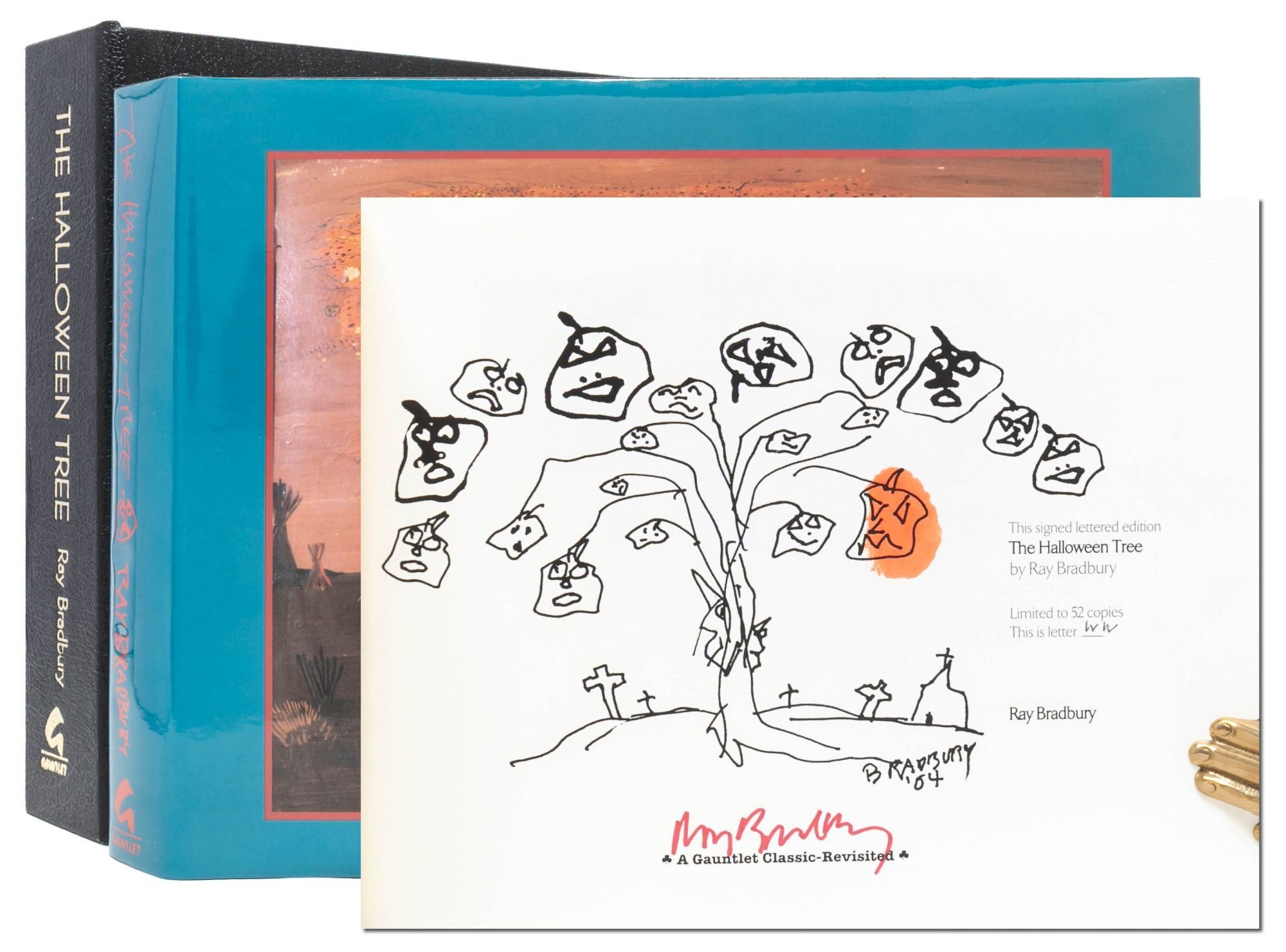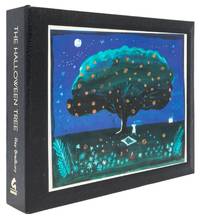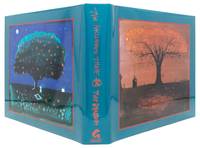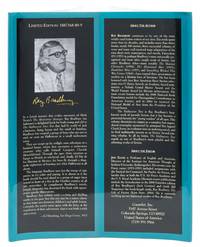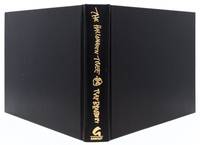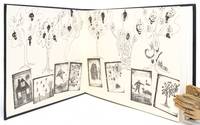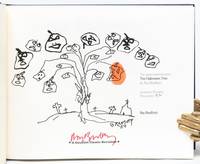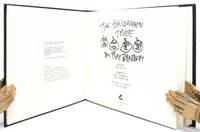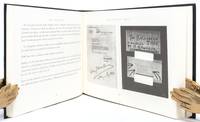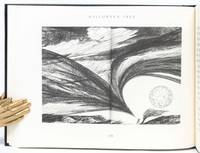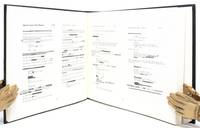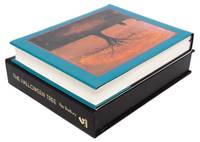The Halloween Tree (Signed limited edition)
- SIGNED
- [Colorado Springs]: Gauntlet Publications, 2005
[Colorado Springs]: Gauntlet Publications, 2005. Signed limited edition. Fine/Fine. One of fifty-two lettered deluxe copies (this being copy WW) in the publisher's clamshell case, signed by Ray Bradbury. 750 numbered copies were also issued. A Fine copy in like dust jacket and box. Publisher's black leather boards and matching box with pictorial panel reproducing an illustration by Joseph Mugnaini. Quarto. 511 pp.
The Halloween Tree is Bradbury's whimsical story about a group of boys who get swept away on an adventure through space and time while trick-or-treating. In pursuit of their lost friend, the boys visit historical locations that reveal the origins and mythology of Halloween. The story is illustrated throughout by Joseph Mugnaini, who also provided illustrations for Bradbury's Fahrenheit 451. Though the novel was first conceived as a screenplay in 1967, it was published as a novel in 1972 and finally adapted into an animated film in 1993.
This definitive edition publishes several versions of the story that were recovered from Bradbury's archives by editor Jonathan R. Eller and had not previously been made accessible to the public. Along with a "preferred edition" of the text that restores Bradbury's original vision before the Knopf editing process, this edition includes facsimiles of the original 1967 screenplay and a 1971 draft of the novel, both with Bradbury's manuscript edits visible, and the 1993 teleplay – all published here for the first time. It also includes ample bonus material: a section tracking the edits made to the novel from Bradbury's early drafts to the first edition published by Knopf; a gallery of the cover designs of various editions of the novel, as well as art and preliminary sketches by illustrator Joseph Mugnaini; interviews and correspondence with Bradbury; a bibliography of Halloween Tree editions and adaptations; and a new preface and introduction by the editor reflecting on Bradbury's creative process, literary and artistic influences, and the cultural impact of his work. This deluxe issue also contains seven reproductions of early typewritten Bradbury short stories, including a ten-page prototype version of The Halloween Tree dated 1959.
In his introduction, Eller writes, "The October Man. This title, created by literary critics of an earlier age for Edgar Allan Poe, has passed in more recent times to Ray Bradbury. His masterful tales, like Poe's, will always be associated with the chilling rains and lengthening shadows of the dying year" (p. 13). Fine in Fine dust jacket.
The Halloween Tree is Bradbury's whimsical story about a group of boys who get swept away on an adventure through space and time while trick-or-treating. In pursuit of their lost friend, the boys visit historical locations that reveal the origins and mythology of Halloween. The story is illustrated throughout by Joseph Mugnaini, who also provided illustrations for Bradbury's Fahrenheit 451. Though the novel was first conceived as a screenplay in 1967, it was published as a novel in 1972 and finally adapted into an animated film in 1993.
This definitive edition publishes several versions of the story that were recovered from Bradbury's archives by editor Jonathan R. Eller and had not previously been made accessible to the public. Along with a "preferred edition" of the text that restores Bradbury's original vision before the Knopf editing process, this edition includes facsimiles of the original 1967 screenplay and a 1971 draft of the novel, both with Bradbury's manuscript edits visible, and the 1993 teleplay – all published here for the first time. It also includes ample bonus material: a section tracking the edits made to the novel from Bradbury's early drafts to the first edition published by Knopf; a gallery of the cover designs of various editions of the novel, as well as art and preliminary sketches by illustrator Joseph Mugnaini; interviews and correspondence with Bradbury; a bibliography of Halloween Tree editions and adaptations; and a new preface and introduction by the editor reflecting on Bradbury's creative process, literary and artistic influences, and the cultural impact of his work. This deluxe issue also contains seven reproductions of early typewritten Bradbury short stories, including a ten-page prototype version of The Halloween Tree dated 1959.
In his introduction, Eller writes, "The October Man. This title, created by literary critics of an earlier age for Edgar Allan Poe, has passed in more recent times to Ray Bradbury. His masterful tales, like Poe's, will always be associated with the chilling rains and lengthening shadows of the dying year" (p. 13). Fine in Fine dust jacket.


